- Home
- Peter Matthiessen
African Silences Page 4
African Silences Read online
Page 4
Daybreak came early to a broken country of low savanna woodlands, sudden hills. I had not slept, and my headache and increasing fever were intensified by transistor radios, a howling baby, and the exertions of a hungry man who was hammering coconuts on the car floor. In search of a breakfast chair for a rich old Muslim, the steward, put off by my grim expression, singled out the most defenseless among those who had filled the seats during the night, a confused peasant with young wife and infant who looked as if he might not know his rights. In the confusion, the infant urinated on the floor, in a sad puddle that rolled across the aisle as the train swayed; the mother rose, bent over forward, and laid the baby on her back, which it clasped unaided like a tree frog, its little seat supported by her own protruding rump, until she had bound it tight in her katanga. In my feverish state, it seemed to me that I had hit upon an explanation for the development of the African posterior, where the infant rides as an appendage of the mother: in early days when katangas were unavailable and a child was affixed precariously with a frond, this sturdy shelf on which it rode while its mother walked or worked her field would surely have been an evolutionary advantage.
At Ferkessédougou, where the Chemin-de-Fer-Abidjan-Niger arrived four hours late, we were met by a very small red auto. Originally our plan had been to drive ourselves, dispensing with a guide; but though the car had been leased to us by the tour agent in Korhogo, its driver turned out to be its owner and would not be left behind, being determined to keep an eye on his possession. And so, in the great heart of midmorning, our band of four set out rather cross and crowded on the fifty-mile trip east over rough dirt roads to the Parc de la Komoé, which lies in the northeast corner of the country. By this time I was so feverish that I scarcely noticed the Malinke villages, nor minded much when, after noon, the car limped to a halt with a flat tire; I stood like a victim of cataclysm on the dusty road edge. By the time we reached the park the spare had gone flat, too, forcing us to hire the lodge vehicle to pursue our research. The two tires were repaired that evening by the park’s mechanic, but the other two were flat next day at dawn.
Today I remember little of the Parc de la Komoé, a tract of more than two million eight hundred thousand acres set aside in 1958 as the Bouna Game Reserve and made a national park in 1968, eight years after independence. I was near-blinded by sick headache, and took small pleasure in the dozen kob and bubales, an oribi, a warthog, and three distant hippo in the Komoé River, which flows all the way south to Abidjan. Of elephants or buffalo, or even their manure, there was no sign. The urbane manager of the tour company had warned us about the lions of Komoé, one of which had mauled a careless client, and a lepidopterist whom we met later in the Parc Marahoué, to the south, claimed to have seen a lion and a leopard at Komoé, as well as the obligatory buffles and bubales (or perhaps it was Buffon kobs and bubales, for here, too, the crafty buffles eluded us) and no doubt we failed to give proper attention to this park which, excepting the chimpanzee and giant eland, is said to contain most of the larger mammals that are found at Niokolo Koba. Yet by the standards of that park (which would be thought meager in East Africa or Botswana) Komoé is thinly populated indeed, by birds as well as by large mammals, tourists included.
In view of the alarming decline of wildlife throughout Ivory Coast, a commendable law against shooting of any kind was passed in 1974, but laws are ignored by the Lobi hunters whose villages surround this north part of the park. The Lobi, who have successfully resisted Islam and Christendom alike, bring their families into the park during the rainy season when the tracks are too muddy to be patrolled; they build their square huts, plant yams and millet, and hunt very much as they have always done. Originally a wild people from Upper Volta, they take it much amiss when their old ways are interfered with, and only a few years ago, Jacob has learned, the warden at Komoé felt so threatened that he prophesied to several friends—correctly, alas—that these Lobi would take his life. Understandably the present warden, erstwhile adjutant to M. André Dupuy of Senegal, has made no better progress against poaching, if these lone sentinels of the vanished herds that could be supported in this huge, well-watered park are any sign. The warden lives outside the park, at Bouna, as we discovered when we sought to interview him. Not that the warden would have given us much hope about the prospects of the Parc de la Komoé, or of any other park in all West Africa.
Zoologists assume that the wild ungulates of western Africa were always less common than in the east and south, not only in numbers but in species. The black rhinoceros, if it ever occurred here, vanished long ago, as did the wildebeest and zebra; for reasons not well understood, West Africa lacks the astonishing variety of antelope that is found south and east of the Nile. Edaphic poverty is sometimes blamed, but the weakness of tropical lateritic soils is fairly consistent almost everywhere throughout this fragile continent, including the game plains in the east that support the greatest biomass of animals, and perhaps the imbalance is better explained by a simpler reason, one that suffices easily all by itself: south of the deserts, in land inhabitable by man, West Africa is far more populous than East, and human beings have been here for a great deal longer, hunting and trapping, burning and cultivating, competing for the pasturage and water, and eroding and exhausting the poor soils. There are many fewer animals in West Africa today than there were fifty years ago, when the white man’s tools and weapons became widespread, but the decline had begun many centuries earlier.
It is now assumed that the great West African states of early times were not in the equatorial rain forest but on the river plains of the savanna such as that region between the middle Senegal River and the Niger Bend where (it is thought) both pearl millet and sorghum were developed; and that the savanna all the way east to Lake Chad has been occupied by large and successful populations of cultivator-fishermen for at least two thousand years. Since these riverine margins, gallery forest, and savannas were also the optimum habitat for wildlife, it is not surprising that the wildlife is now gone.
Under the pressure of Islam and the Arab slave trade, the savanna peoples took refuge in the forests, putting to use the same tropical crops that the Bantu-speakers of Niger and Cameroon had used for their southeastward penetration of the Congo Basin—not manioc, maize, and sweet potato, which were brought from the Americas in the sixteenth century by Portuguese slavers, but the yam, taro, and banana introduced from Southeast Asia to the East African coast perhaps as early as the first century B.C. The deserted savanna was soon occupied by others—the pastoral Fulani, for example, and the Malinke, and the great Voltaic tribes of the Niger River, driven ever southward by the remorseless spread of the Sahara.
This open grassland of small, scattered trees that resist annual drought as well as fire is all but monotypic from Senegal east to the northern plain of the Republic of the Congo; the fauna (and flora) are essentially the same, not only in Niokolo Koba and the Parc de la Komoé but in the Mole Reserve in northern Ghana, a complementary cluster of wild parks—l’Arly, Pendjari, and the “Parcs du W,” near the common borders of Upper Volta, Niger, and Benin—and several parks in Cameroon, in Central Africa. Since most of this region has been man’s domain for thousands of years, and the rest will become so as tsetse is brought under control, there isn’t much hope that the status of wild animals in any of the West African parks would differ much from the status here in Komoé, and the few reports would indicate that it does not, despite the establishment of “reserves” and even some token restocking programs (as in Nigeria). As early as 1934, in a book on his travels in West Africa, one observer remarked, “But I should have been surprised if I had been told that I should travel about seven thousand miles without seeing any live wild animal larger than an antelope.”* Unlike Kenya and Tanzania, where the ambivalent attitude toward wildlife is quite similar but where the economic impetus of tourism is clear, these countries see small reason to protect what is left of their wildlife, far less restore what is now gone.
Except in regard
to Senegal, good data on the status of wildlife in West Africa is rather scant—a reflection in itself of official attitudes—but a comprehensive survey made in Nigeria in 1962 confirms most of one’s worst fears about this region. Excepting the vast and empty lands of the south Sahara—Mauritania, Mali, and Niger—Nigeria is by far the largest of the West African states, and because it adjoins the states of Central Africa, such as Cameroon, where human beings and their weapons are less common, and where a reservoir of wildlife still exists, it might be expected to be better off than the smaller countries to the west. But according to this report, the last black rhinos in Nigeria were exterminated in either 1935 or 1945—no one really knows—the giant eland and several other antelopes have vanished, and almost all of the remaining larger mammals, even the jackals, are threatened with extinction, together with the larger reptiles and large birds. Of the thirty-two hoofed species, all but nine are extinct, threatened with immediate extinction, or “seriously depleted”; the exceptions are the bushbuck and a few species of duiker. Outside its only game reserve, Yankari, a tract of about eight hundred square miles northwest of the Benue River where it is claimed the fauna is increasing, it is unusual for the visitor to Nigeria to see any live wild animals other than, just possibly, a few primates; in five thousand miles of driving, the author of the 1962 report noted a dozen baboons, three patas monkeys, and two monkeys of unidentified species. Birds are scarce, too. Although Nigeria has the only ornithological society in West Africa, its national bird, the beautiful crowned crane, is at least as scarce as our bald eagle. “One is continually being reminded by Nigerians that theirs is the most densely populated nation in Africa and that perhaps, therefore, there is no place for wildlife.”*
In East Africa, the loss of habitat through intensive settlement, land use, and overgrazing has been the main threat to wildlife; but in West African countries such as Nigeria, which tolerates year-round hunting (often at night, and often in gangs) of every species, regardless of scarcity, sex, or age, together with epidemic use of steel traps, snares, and encircling fires, the outright destruction of the animals themselves may be more damaging. Out of seventeen animals in a collection made in recent years by a Monsieur Brandt, sixteen had been previously wounded by crude pellets from one of the estimated four million or more muzzle-loaders used in the back country for hunting “bush meat.” In these populous, poor countrysides, wild game has always formed a high percentage of the meager protein diet; thus, nama, the local Hausa word for “animal,” also means “meat” (apparently this word survived the southeastern migrations of the Bantu-speakers out of Nigeria and Cameroon and on into East Africa, where nyama is the Swahili word for “game”).
Similarly, in Ghana, there are wildlife preservation laws that date back to 1901, but as late as 1953, game preservation was administered by the Tsetse Control Department, which was dedicated to “eradication of the tsetse flies through game shooting and habitat clearing along river and stream courses.”* Since independence, in 1957, there has been a growing concern about wild creatures that older Ghanaians can still remember as part of their cultural and spiritual heritage; this is offset by a widespread belief that the wildlife is doomed and could never be restored to the abundance that might attract tourists. The only game reserve of significance at present is at Mole, across the frontier from the Parc de la Komoé. In 1967, a Department of Game and Wildlife was created, but as in Nigeria, there remains an almost total lack of public education and enforcement of wildlife legislation, which will be ignored in any case until the people’s protein needs are otherwise taken care of. In Ghana, almost anything that moves is esteemed highly as a source of nourishment, even those creatures formerly protected by traditional taboos. Warthog, baboon, and the small antelopes are still the most common source of bush meat in the back country, but a great many other creatures, including puff adders and civet cats, are also consumed wherever they are found. The “grass cutter” or cane rat and the giant rat lead the list of wild creatures on the bill of fare at Accra, the capital city.
West of Ivory Coast, the situation is no better. As of 1970, when a survey of wildlife conservation in West Africa was made by the IUCN, neither Liberia nor Sierra Leone had a single national park or wildlife refuge. Sierra Leone had lost all but four percent of the primary rain forests that once covered the whole land (its Gola Forest is the last hope for conservation) yet it still permits almost unlimited hunting, even by foreigners. Liberia retains a lot more of its forest (twenty-one percent), but here, too, the destruction of animals is epidemic, and there is no limit whatsoever on the elephant, which is in danger of extermination. No export permits are required for ivory, hides, skins, and assorted animal parts, and export permits for live animals—mostly young chimpanzees, whose mothers are invariably killed—may be had for twenty-five cents. Formerly, trapping permits were required, but for some reason these have been dispensed with, either because nobody bothered with them or because there was so little left to trap.
All along the coast, the lumbering and burning of the rain forests have largely depleted the wild creatures, but those countries whose territories extend north into the Sahel have retained small populations of the more common savanna species, and Benin can claim two important national parks. The Parcs du W protect about two hundred square miles of savanna, and the Parc Pendjari, about half that size, includes savannas, combretum woods, and gallery forest; there are also three game reserves adjoining these parks where some effort is made to control illegal hunting. Three other parks have been established across the border to the north, one in Niger and two in Upper Volta. Theoretically the savannas of Nigeria (see endpaper map) could be replenished by the animal populations that are protected by Benin and Cameroon. Although Nigeria was a signatory to the African Convention for the Conservation of Nature and Natural Resources (Algiers, 1968), and has passed commendable wildlife legislation, it has not proceeded with the education of the public, which has an understandable contempt for laws that are not enforced. But this prosperous country that has left no place for wildlife has a reputation—among black Africans as well as whites—as one of the “angriest” and most confused of the new nations, and one must wonder if these two circumstances are not related.
After four flat tires, we had lost faith in our car, and, having missed the early game viewing for want of a vehicle, Dr. Boese decided to leave the Parc de la Komoé as soon as possible. With tires repaired, we headed west again across the Bandama River, which flows down to the coast at Grand Lahou. In the empty country beyond Ferkessédougou came the fifth flat tire in twenty-four hours, and this time, in attempting to repair it, Sauri the driver stripped the lug threads, making it impossible to remove the wheel. A vehicle bound for Korhogo, twenty miles away, took Sauri in, and when, two hours later, he had failed to reappear, Jacob Adjemon caught a ride in the same direction, returning an hour later in a taxi. We proceeded straight to the tour agent in Korhogo, to have words about the caliber of the car, but this Malinke gentleman, M. Toure Basamanno, blamed everything on poor Sauri, and swore roundly that Sauri would pay; far from expressing regret at our inconvenience, Basamanno saw himself as the real victim. He had another driver, Mamadou, whose car was in such superb condition that Basamanno’s great regret—and here he belched—was that he could not accompany us himself. This weary and cynical fellow had just lunched, and now he lay across his desk in postprandial repose; his shifting eye did not inspire confidence, and his questing mouth contained an outsized kola nut, bright orange in hue, that rolled into view like a hanged man’s tongue each time he spoke. Later we were told by Mamadou that this sacré Basamanno had yet to pay him for four days’ work performed last January.
Korhogo is a great center of Senoufou culture, and before leaving we visited its markets, where masks and statues, brown-and-black paintings on raw linen weavings, anklets and bracelets of old brass, carved ivory, wooden boxes, beads, and exotic knickknacks of all kinds are hawked by the network of Senegalese who control most of th
e antiquities trade in Ivory Coast. While some of the wood carvings were old, most were quite new, and in another street, we watched the carvers hard at work with “les vrais hâches de leurs grand-pères.” The growing tourist trade has taken precedence over tradition, and most of the stuff, hacked out with an eye for quantity rather than quality, is rather bad; the wax job that gives it a high shine only points up the facile decadence of style.
The Senoufou, like the Lobi, are a Voltaic people from the north; they call themselves Sienamana. Like many other peoples of West Africa, they were driven south toward the forest edge by Arab slavers, and have remained here due to the spread of the Sahara. Senoufou Land was formerly much larger, extending from Odienné to Kong and Katiola, but it was pressed in from east and west by invasions of the Malinke (or North Mande or “Mandingo”), a Niger River people who were also driven south by Arab encroachment. As early as the seventeenth century some Malinke were converted to Islam, and in the nineteenth century, led by a famous despot named Samory, they scourged and ruled almost all of the interior—Mali, Niger, Upper Volta, the northern Ivory Coast, Sierra Leone—until French troops from Senegal captured Samory and assigned his enormous empires to themselves. Like the Peulh, the Malinke are widely scattered in West Africa, north to Timbuktu and all the way west to Casamance, in Senegal. In the country east of Ferkessédougou (which was founded in the nineteenth century by Senoufou driven north and west by the king of Kong) they are called “Dioula” or “Traders,” having turned their warrior instincts toward commerce. The insistent pressures of the Malinke have forced the Senoufou to congregate in the large communities that are probably the source of their advanced culture, instead of littering the landscape in the usual pattern of savanna villages, and in the open countryside a few birds may still be seen—stone partridge, francolins, laughing doves, a hawk.

 Lost Man's River: Shadow Country Trilogy
Lost Man's River: Shadow Country Trilogy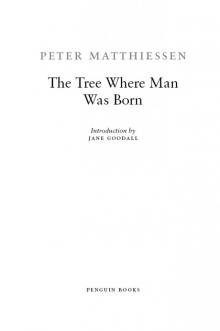 The Tree Where Man Was Born
The Tree Where Man Was Born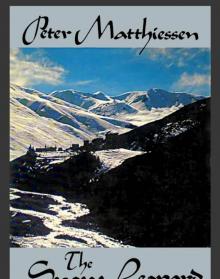 The Snow leopard
The Snow leopard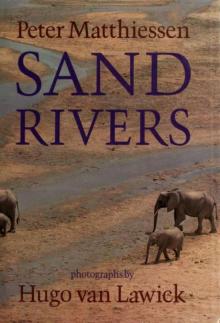 Sand Rivers
Sand Rivers The Cloud Forest
The Cloud Forest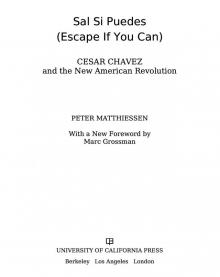 Sal Si Puedes (Escape if You Can)
Sal Si Puedes (Escape if You Can)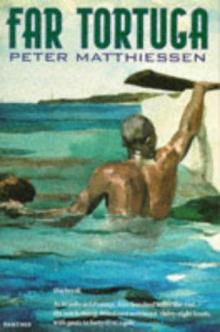 Far Tortuga
Far Tortuga Men's Lives
Men's Lives On the River Styx: And Other Stories
On the River Styx: And Other Stories Shadow Country
Shadow Country At Play in the Fields of the Lord
At Play in the Fields of the Lord Lost Man's River
Lost Man's River Killing Mister Watson
Killing Mister Watson On the River Styx
On the River Styx